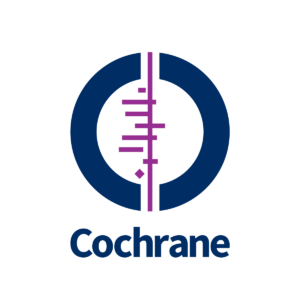
Benefits and risks of skin disease treatments in people with lupus
 June 02nd, 2021
June 02nd, 2021 Nakita Cambow
Nakita Cambow Blog, Uncategorized
Blog, Uncategorized 0 Comments
0 Comments
COCHRANE REVIEW: What are the benefits  and risks of different treatments for skin disease in people with systemic lupus erythematosus?
and risks of different treatments for skin disease in people with systemic lupus erythematosus?
Why is this question important?
Systemic lupus erythematosus (SLE; also known as ‘lupus’) is a disease in which the body’s immune (defence) system mistakenly attacks healthy tissue in many parts of the body. It affects 7.5 million people worldwide. Around 70% of affected people develop skin problems such as rash on the nose or cheeks. Often, SLE also causes pain in joints and muscles and extreme tiredness. Symptoms can improve temporarily, or they can worsen suddenly (flares). In severe cases, SLE can cause life‐threatening damage to the heart, lungs, brain, or kidneys.
There is no cure for SLE. However, there are treatments designed to improve symptoms. In particular, there are a range of options for treating skin problems.
- Medicines that can be taken by mouth (orally), applied as creams, or given as injections.
- Therapies to help people cope with their skin problems, such as talking therapies.
- Other approaches, including herbal medicine, light therapy, or make‐up.
To find out which treatments work best for people with SLE, and to compare adverse (unwanted) effects, we reviewed the evidence from research studies.
How did we identify and evaluate the evidence?
We searched the medical literature for studies that compared any treatment for skin disease in SLE against:
- a placebo (dummy) treatment;
- no treatment;
- another treatment; or
- a different dose of the same treatment.
We compared the results and summarised the evidence from all the studies. Finally, we rated our confidence in the evidence based on factors such as study methods and sizes and the consistency of findings across studies.
What did we find?
We found 61 studies that included 11,232 people (mostly women) and  investigated 43 different treatments. Most treatments lasted one year, and people were followed for up to 48 months.
investigated 43 different treatments. Most treatments lasted one year, and people were followed for up to 48 months.
Here we report the main findings of our review on the effects of five different oral medicines: hydroxychloroquine, chloroquine, methotrexate, ciclosporin, and azathioprine.
Disappearance of skin problems
We do not know if hydroxychloroquine is better or worse than placebo at making skin problems disappear because no studies reported information about this.
The evidence suggests that:
- chloroquine may be better at making skin problems disappear after 12 months than placebo (1 study, 24 people);
- when we compare methotrexate and choloroquine, there may be little to no difference in how often they make skin rashes disappear after six months (1 study, 25 people);
- methotrexate may be better for making skin rashes disappear after six months than placebo (1 study, 41 people); and
- there may be little to no difference in how often skin problems disappear after 12 months between ciclosporin and aziathropine (1 study, 25 people).
Partial disappearance of skin problems (at least 50% improvement in the skin condition)
It is unclear if hydroxycholoroquine is better or worse than placebo at  making skin problems disappear at least partially after 12 months. This is because the evidence is too imprecise (1 study, 20 pregnant women).
making skin problems disappear at least partially after 12 months. This is because the evidence is too imprecise (1 study, 20 pregnant women).
No other studies have examined how treatments affect the partial disappearance of skin problems.
Flares
The evidence suggests that after six months, fewer flares probably occur with hydroxychloroquine than with placebo (1 study, 47 people).
It is unclear if flares are more, or less, likely to occur after 12 months with methotrexate compared to placebo (1 study, 86 people).
No other studies have reported information on how treatments affect flares.
Adverse events
Evidence is often imprecise, and whether treatments lead to more or fewer adverse events than placebo or other treatments is not clear.
We found limited data for adverse events, and reports were discrepant, but hydroxychloroquine, chloroquine, and methotrexate have well‐known adverse effects including stomach and liver problems. Hydroxychloroquine and chloroquine can cause eye problems, and methotrexate can cause serious harm to a developing baby if taken during pregnancy.
Other outcomes
We do not know how treatments affect other aspects of disease severity or quality of life. This is because studies did not report information on this.
What does this mean?
When compared against a placebo, studies in people with SLE show that:
- fewer flares probably occur with hydroxychloroquine
- methotrexate and chloroquine may be better at making skin problems disappear.
Information about adverse effects is limited.
How up‐to‐date is this review?
The evidence in this Cochrane Review is current to June 2019.
Further Reading
Read our Lupus and the Skin Booklet HERE
Read our blog article on Coping with Itchy Rashes HERE



 ©2024 LUPUS UK (Registered charity no. 1200671)
©2024 LUPUS UK (Registered charity no. 1200671)